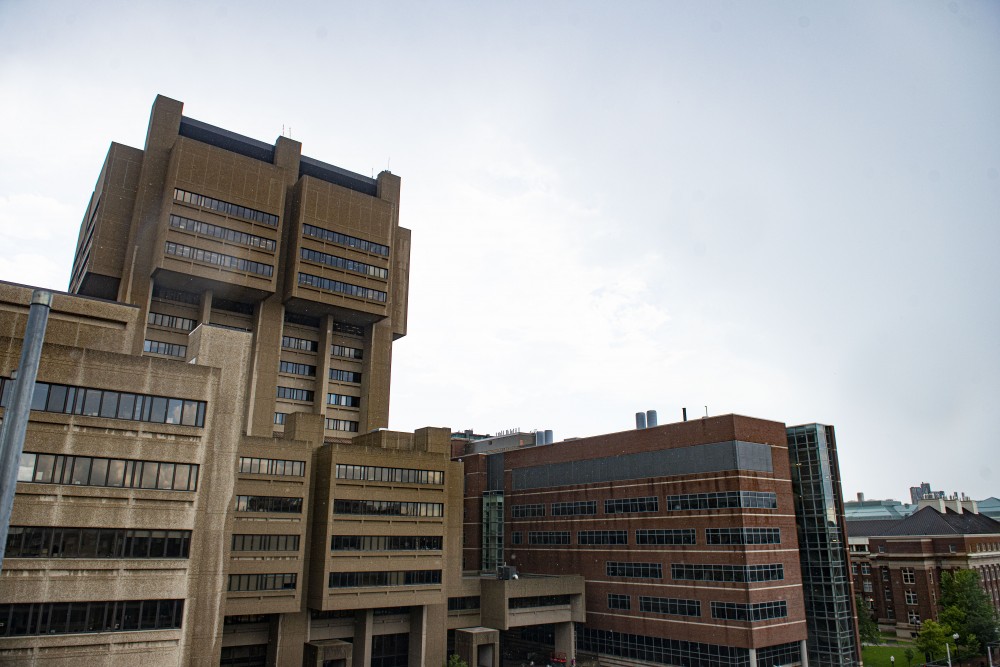With the 2010 elections drawing near, University of Minnesota students are tuning in to the debates and discussions, and soon they will use their votes to voice their opinions.
Despite an increase in the 2008 presidential election, young voters historically do not participate in midterm elections.
In the last midterm election, 47 percent of 18-to-29-year-olds in the Twin Cities cast their votes. It was the highest young voter turnout in a metropolitan area in the nation, according to the Center for Information and Research on Civic Learning and Engagement. As a state, Minnesota claimed the second highest young voter turnout.
The percentage of young voters who participated in midterm elections had been declining since 1974, the first election to include 18-year-olds. In 2006, national participation rose slightly to 25.5 percent, but still trailed the 1974 turnout of 29.5 percent, according to CIRCLE. Above-30 participation was at 53.7 percent nationally in 2006, and Minneapolis-St. Paul topped the list of all metropolitan areas with 71 percent.
Felicia Hammerschmidt, a University student working with Minnesota Public Interest Research Group, said that the organization has helped more than 550 people register to vote this fall.
âÄúI definitely think there are a lot of people who feel uninformed about this election. There are so many issues students are concerned about,âÄù said Hammerschmidt, referencing tuition costs as a major student issue.
First-time University student voters can pre-register by completing a Voter Registration Application and submitting it by Oct. 12 to a local election official at the Hennepin County Government Center. Voters who do not pre-register can do so on Election Day at a polling location, but must be able to provide proof of residence.
Students at the University who are eligible to vote in more than one location can choose which location they prefer to vote, but canâÄôt vote in more than one location. Students voting using the absentee ballot must complete an Absentee Ballot Application, available on the Secretary of StateâÄôs website, and will be mailed a ballot.
To become more informed on issues and candidates, sophomore Maia Corporaal plans to do more research on news sites. She also cited her parents as an influence on her political views.
âÄúMy dad is so opinionated; he argues a lot about politics, and I hear a lot of those conversations,âÄù said Corporaal. âÄúI donâÄôt really tend to align with one political party. It depends a lot on the candidate.âÄù
To counter studentsâÄô concerns, especially those about first-time voting and making informed decisions, many student organizations are working to help students become more educated.
In a 2007 Youth Voting Coalition nationwide survey, 4 out of 5 students said they followed current events. The survey found that the most effective way to increase turnout is for candidates to speak to students about the issues that concern them.
University biomedical engineering first-year Ryan Fredrick wants to go to medical school. His vote this year will be affected by his dislike for the Obama administrationâÄôs changes to health care coverage.
Alex Hellweg, a University student, said tuition costs were a personal concern. Hellweg said that while Republican candidate Tom Emmer wanted to cut 14 percent from the UniversityâÄôs budget, Democratic candidate Mark Dayton felt that an investment in education was important.
âÄúI certainly agree [with Dayton]. I see the budget cuts and tuition increases,âÄù said Hellweg, mentioning that some students see eye to eye with his views while others donâÄôt seem as interested.
âÄúMy big concern is the apathy I see in some students,âÄù Hellweg said. âÄúThe issues are more at stake than ever.âÄù
Before the 2008 presidential election, the creation of well-paying jobs and affordable college and higher education rank highly among the concerns of young voters under 30, according to the Educational Webcasting NetworkâÄôs rocktheweb.org.
In the 2004 presidential election, 18-to-29-year-olds made up 18.4 percent of the eligible voting population, but only 49 percent of those citizens cast a vote.
In 2008, however, the number of young voters increased substantially. An estimated 22 million Americans under the age of 30 voted in the 2008 election, an increase of about 2 million, bringing the turnout rate up to 51 percent.
Daily Email Edition
Get MN Daily NEWS delivered to your inbox Monday through Friday!

Published April 19, 2024

Published April 19, 2024

Published April 19, 2024
Trending
Twin Cities boasts best youth vote turnout
47 percent of 18-to-29-year-olds voted in the 2006 midterm.
by Sadelle Schroeder
Published October 12, 2010
Leave a Comment
More to Discover
Advertisement
The Minnesota Daily • © 2024 The Minnesota Daily • Privacy Policy • FLEX Pro WordPress Theme by SNO • Log in













